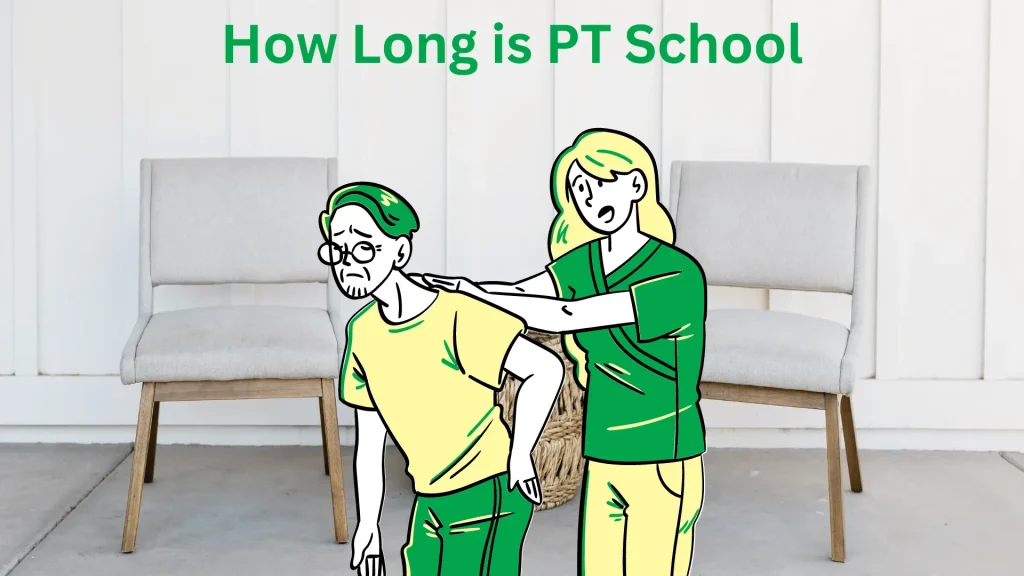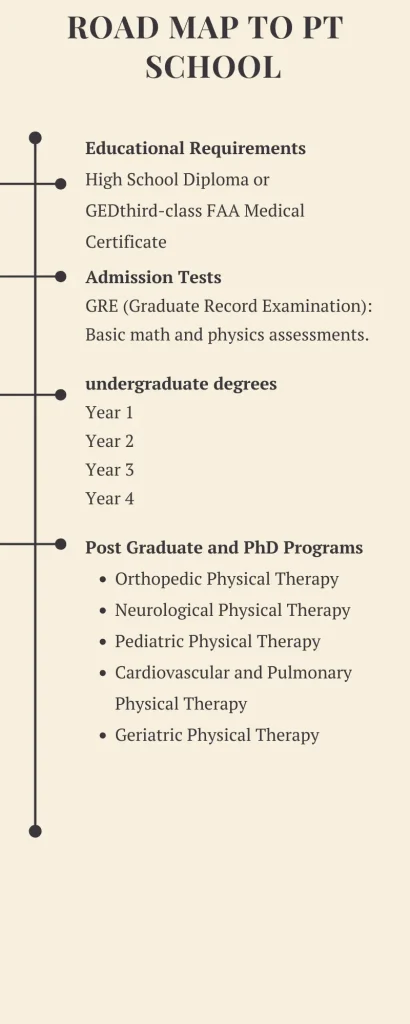How Long is PT School?
Are you considering a career in physical therapy and wondering, “How long is PT school?” Understanding the duration and structure of PT programs is essential for planning your education and future career. This guide will provide a detailed overview of what to expect in physical therapy school, including the length of programs and the courses you will take.
What is PT School?
Physical therapy (PT) school is an educational program that trains students to become licensed physical therapists. Physical therapists are healthcare professionals who help patients recover from injuries, improve mobility, and manage pain. They work in various settings, including hospitals, clinics, and private practices.

In PT school, students learn about human anatomy, physiology, kinesiology, and therapeutic techniques. The curriculum includes both classroom instruction and hands-on clinical experience. Graduates of PT programs must pass a licensing exam to practice as physical therapists.
How Long is PT School?
The duration of PT school can vary depending on the educational path chosen. Here’s a breakdown of the typical timeline for an undergraduate program in physical therapy:
Undergraduate Degree (4 years)
Year 1: In the first year, students typically complete general education courses and introductory science courses such as biology and chemistry. These foundational courses are essential for understanding the more advanced topics in physical therapy.
Year 2: The second year often includes more specialized courses in anatomy, physiology, and kinesiology. Students also start taking introductory courses in physical therapy, learning basic assessment and treatment techniques.
Year 3: In the third year, students dive deeper into physical therapy-specific courses. Subjects may include pathology, pharmacology, and therapeutic exercises. Clinical experiences or internships may also begin during this year, providing hands-on training.
Year 4: The final year typically focuses on advanced physical therapy topics, including specialized areas such as orthopedics, neurology, and pediatrics. Students also complete extensive clinical rotations, gaining practical experience in various healthcare settings.

Overall, completing an undergraduate degree in physical therapy usually takes four years of full-time study.
How to Enter PT School
Entering PT school requires meeting specific educational and testing requirements. Here are the general steps:
Educational Requirements:
- High School Diploma: Aspiring PT students must have a high school diploma or equivalent.
- Undergraduate Prerequisites: Before entering a PT program, students must complete prerequisite courses during their undergraduate studies. These typically include biology, chemistry, physics, anatomy, physiology, and psychology. Some programs may also require courses in statistics and English composition.
Standardized Tests:
- GRE (Graduate Record Examination): Many PT programs require applicants to submit GRE scores. The GRE assesses verbal reasoning, quantitative reasoning, and analytical writing skills. High scores on the GRE can strengthen an application and improve chances of admission.
- Other Tests: Some programs might accept other standardized tests or have their own entrance exams. It’s important to check the specific requirements of each PT school you are interested in.
Application Process:
- Transcripts and GPA: Applicants need to submit official transcripts from all post-secondary institutions attended. Most programs have a minimum GPA requirement, often around 3.0 on a 4.0 scale.
- Letters of Recommendation: PT schools usually require letters of recommendation from professors, employers, or healthcare professionals who can attest to the applicant’s qualifications and potential.
- Personal Statement: A well-written personal statement or essay is often required. This is an opportunity for applicants to explain their motivation for becoming a physical therapist, highlight relevant experiences, and demonstrate their commitment to the field.
- Interview: Some programs conduct interviews as part of the selection process. This allows admissions committees to assess an applicant’s communication skills, professionalism, and suitability for the program.
By understanding these requirements and preparing accordingly, prospective students can increase their chances of being accepted into a PT program and embarking on a rewarding career in physical therapy.
Post Graduate and PhD Programs
For those seeking advanced education in physical therapy, postgraduate and PhD programs offer opportunities for specialization and research. Here’s a look at these advanced programs:
Doctor of Physical Therapy (DPT):
- Duration: 3 years
- Curriculum: The DPT program includes advanced coursework in areas such as musculoskeletal, neuromuscular, cardiovascular, and pediatric physical therapy. Students also complete extensive clinical rotations to gain practical experience.
Types of Specialization Programs
Orthopedic Physical Therapy
Description: Focuses on musculoskeletal conditions and rehabilitation techniques.
Program Duration: Typically 1-2 years for post-graduate certifications; PhD programs may take 3-5 years.
Neurological Physical Therapy
Description: Addresses conditions like stroke, traumatic brain injury, and spinal cord injury.
Program Duration: Similar to orthopedic programs in duration.
Pediatric Physical Therapy
Description: Involves working with children with developmental delays or injuries.
Program Duration: Usually shorter than orthopedic or neurological programs.
Cardiovascular and Pulmonary Physical Therapy
Description: Deals with heart and lung conditions and rehabilitation.
Program Duration: Varies but generally shorter than orthopedic or neurological programs.
Geriatric Physical Therapy
Description: Focuses on the needs of older adults, including balance and fall prevention.
Program Duration: Typically shorter; may include specialized certifications rather than full PhD programs.
PhD in Physical Therapy:
Discuss the structure and focus of PhD programs in physical therapy, emphasizing research methodologies, dissertation requirements, and potential career paths in academia or advanced clinical practice.
- Duration: 4-6 years
- Curriculum: A PhD program focuses on research and academic scholarship. Students conduct original research, contribute to scientific knowledge, and prepare for careers in academia and advanced clinical practice.
Top 10 PT Schools
Here are ten of the top physical therapy schools in the world, known for their exceptional programs and courses offered:

1.University of Southern California (USC), USA
urses: DPT, PhD in Biokinesiology and Physical Therapy
2.University of Pittsburgh, USA
Courses: DPT, PhD in Rehabilitation Science
3.Washington University in St. Louis, USA
Courses: DPT, PhD in Movement Science
4.University of Delaware, USA
Courses: DPT, PhD in Biomechanics and Movement Science
5.University of Iowa, USA
Courses: DPT, PhD in Physical Rehabilitation Science
6.Northwestern University, USA
Courses: DPT, PhD in Physical Therapy and Human Movement Sciences
7.University of Miami, USA
Courses: DPT, PhD in Physical Therapy
8.University of Melbourne, Australia
Courses: DPT, Master of Physiotherapy
9.University of Toronto, Canada
Courses: MScPT (Master of Science in Physical Therapy), PhD in Rehabilitation Science
10.University College London (UCL), UK
Courses: MSc in Physiotherapy, PhD in Rehabilitation Science
Factors Affecting the Length of PT School
Several factors can influence the duration of your PT education:
Program Type: Traditional vs. accelerated programs
Specializations: Additional certifications or specializations can extend the duration
Part-time vs. Full-time Enrollment: Part-time students take longer to complete programs
Clinical Rotations: Required clinical hours can vary by program
Prerequisite Courses: Some students may need extra time to complete prerequisite courses
Licensing Exam Preparation: Time spent preparing for and passing licensing exams
Research Requirements: Additional time for research in advanced degrees
Final Verdict
So, how long is PT school? The journey typically begins with a four-year undergraduate degree, followed by three years for a DPT program. For those pursuing specializations or a PhD, the duration can extend further. Understanding these timelines helps prospective students plan their education and career in physical therapy effectively.
FAQs
1. What is the average duration of a PT program?
The average duration for a Doctor of Physical Therapy (DPT) program is three years, following a four-year undergraduate degree.
2. Can I complete PT school faster through an accelerated program?
Yes, some universities offer accelerated programs that may shorten the overall duration by combining undergraduate and graduate coursework.
3. What prerequisites are required for entering a DPT program?
Common prerequisites include courses in biology, chemistry, physics, anatomy, physiology, psychology, and sometimes statistics.
4. Are clinical rotations mandatory in PT school?
Yes, clinical rotations are a crucial part of PT education, providing hands-on experience in real-world settings.
5. How long does it take to specialize in a particular area of physical therapy?
Specialization programs usually take an additional 1-2 years after completing a DPT program.
